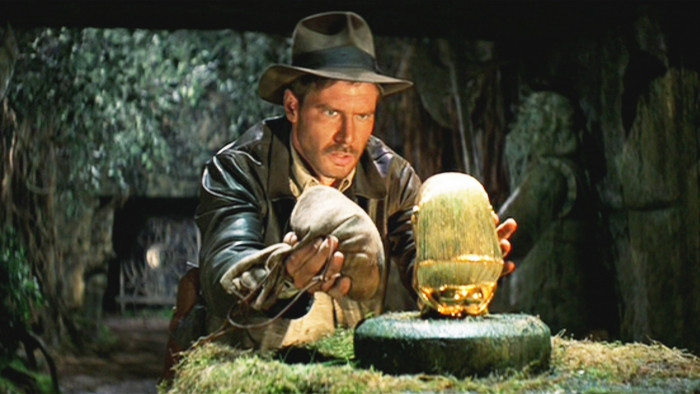The late Henry Hill was the mafia rat who inspired GoodFellas. Jon Axworthy finds out how the former gangster managed to make it to the age of 69 without being fitted for concrete boots.
The American mafia has plenty of names for those who join its ranks. From the wiseguys and goodfellas on the street to the capos, consiglieres and godfathers who sit at the head of their sprawling crime families.
However, the Mob only has one word for those who turn on them: ‘rat’, so named because a rat will do anything to survive, including testifying against their former colleagues in court.
This is exactly what Henry Hill did when he became a government witness and gave evidence against the Lucchese family, which he had been a part of since he was 11 years old.
Traditionally, the fate of a rat was a bullet to the head and a shallow grave – if they were lucky. But Hill died peacefully in a hospital bed last month, aged 69, after a long struggle with chronic illness. So just how did the most famous rat in mafia history manage to die of natural causes? That answer lies with the effectiveness of the US Department Of Justice and the mythical power of the Mob.
Hill regularly saw the Lucchese family on the corners and cabstands of his neighbourhood in Brownsvillle, New York, and by the age of 16 had given up school for a street education. He earned thousands of dollars a week doing the Mob’s dirty work: collecting gambling debts, holding up delivery trucks and selling stolen cigarettes.
When caught red-handed offloading one hijacked shipment, Hill refused to cooperate with the police, which earned him the respect of lethal hit men Jimmy ‘The Gent’ Burke and Tommy ‘Two-Gun’ DeSimone, as well as underboss Paul Vario. Together they became known as the Robert’s Lounge Crew, named after the saloon where they drank and gambled. By Hill’s own admission, he was bringing in huge profits at the height of his power.
“The government said a couple of hundred million dollars went through my hands. But I just blew it on slow horses, women, drugs and rock’n’roll,” he once claimed. “I was making $15,000 to $40,000 a week.” His last heist with the crew was in 1978 when they targeted the Lufthansa depot at JFK airport, and walked away with £3.2m in untraceable bills. Following the robbery, the Robert’s Lounge Crew was put under 24-hour surveillance by the FBI. The scrutiny became too much for Burke who had planned the heist; as the Feds turned the screw, Burke began to murder everyone involved with the robbery.
Hill realised he was a target and so, after he was arrested on a drugs charge in 1980, he agreed to testify against members of the organisation, which led to 50 convictions and long sentences for Burke and Vario. For his betrayal, the mafia put a bounty on his head that was reportedly more than $1m. Not that it mattered to Hill – he disappeared into the Witness Protection Programme (WITSEC) before anyone could claim the money.
Protecting Hill
The US Marshals Service, which runs the programme, is one of the main reasons why Hill lived to see old age. “To date, none of the witnesses in WITSEC have been murdered in retaliation for their testimony,” reveals the former chief of the FBI’s Organised Crime section Matthew Heron. “During Hill’s trial he would have been housed at military bases such as Fort Knox.”
Every opportunity for a security leak is minimised by the Marshals Service, including the use of fake credentials, which are backstopped so that they carry no traceable history. Hill was moved more than 10 times and lived under different aliases such as Peter Haines and Alex Canclini.
“His first fake names would have been constructed using the same first name,” says Heron. “This ensures that if a witness starts writing their old name on a document they can usually catch it in time to start writing their new one without arousing suspicion.”
However, the biggest problem that the Marshals Service has in protecting ex-mafia witnesses is making sure they don’t get bored. “Bear in mind these guys are used to the high life,” adds Heron. “It’s estimated that one in five witnesses return to a life of crime.”
This is why the service allowed crime journalist Nicholas Pileggi to chronicle Hill’s life in his 1986 book Wiseguy, to keep Hill from slipping back into his old ways. However, it wasn’t enough and Hill was arrested on drugs charges and released from witness protection in the early Nineties after continually breaking the conditions of his protection.
THE POWER OF SCORSESE
By the time he came up for air in1992, Martin Scorsese’s GoodFellas, based on Pileggi’s bestseller with Ray Liotta in the lead role, had already become a modern gangster classic and Hill, who reassumed his realname, was suddenly a celebrity.
He appeared in photoshoots, sold artwork on eBay, opened a restaurant called Wiseguys, launched a brand of spaghetti sauce and even set up his own website; ‘Threat Of The Week’ became a regular feature on Goodfellahenry.com, highlightingthe numerous death threats he would receive. One ‘winner’ read: “Regarding your corpse goodbye rat.”
Of course, how potent the threats were is debatable. They could just as well have been written by a teen in Australia. It was almost as if Hill were more use to the modern-day Mob alive than dead. “The reality is that the mafia today is in free-fall,” reveals Heron. “Four of the five New York bosses are in prison, and the guys on the street don’t want the title. The Lucchese family that Hill belonged to doesn’t even have a boss any more. It’s ruled by committee to spread the risk of prosecution.”
However, every time Hill appeared in a documentary or guested on The Howard Stern Show, he alluded to a Mob that still held his life in the balance. In reality, there have been no mafia-related murders in recent years, helped in part by a federal statute that makes murder in aid of racketeering a crime eligible for the death penalty.
“Hill got a pass because he was good PR for a crumbling mafia, whose authority, territory and businesses were now being overrun by Puerto Rican, Dominican and Mexican gangs,” says former Gambino crime family member Andrew DiDonato. “Although, who’sto say they could have got to him anyway? The organisation is full of suburban mobsters these days. They don’t want to kill anybody.”
Ray Liotta’s final lines in GoodFellas bemoan the fact that he became “an average nobody” after testifying, living the rest of his life “like a schnook”.
Lisa Caserta was Hill’s partner for 14 years of that “schnook” life and she claims he was proud of what he had done: “He put a lot of bad men in jail,” she says. “He had his demons, which he over-medicated with Jack Daniel’s and cigarettes, but he passed away with love, not violence.”
He had outrun the Mob’s gunsand outlived the gangsters who could have pulled the trigger. In the end, life caught up with Henry Hill, not a hitman’s bullet.
Latest
Related Reviews and Shortlists


The 10 best war movies of the 21st century









